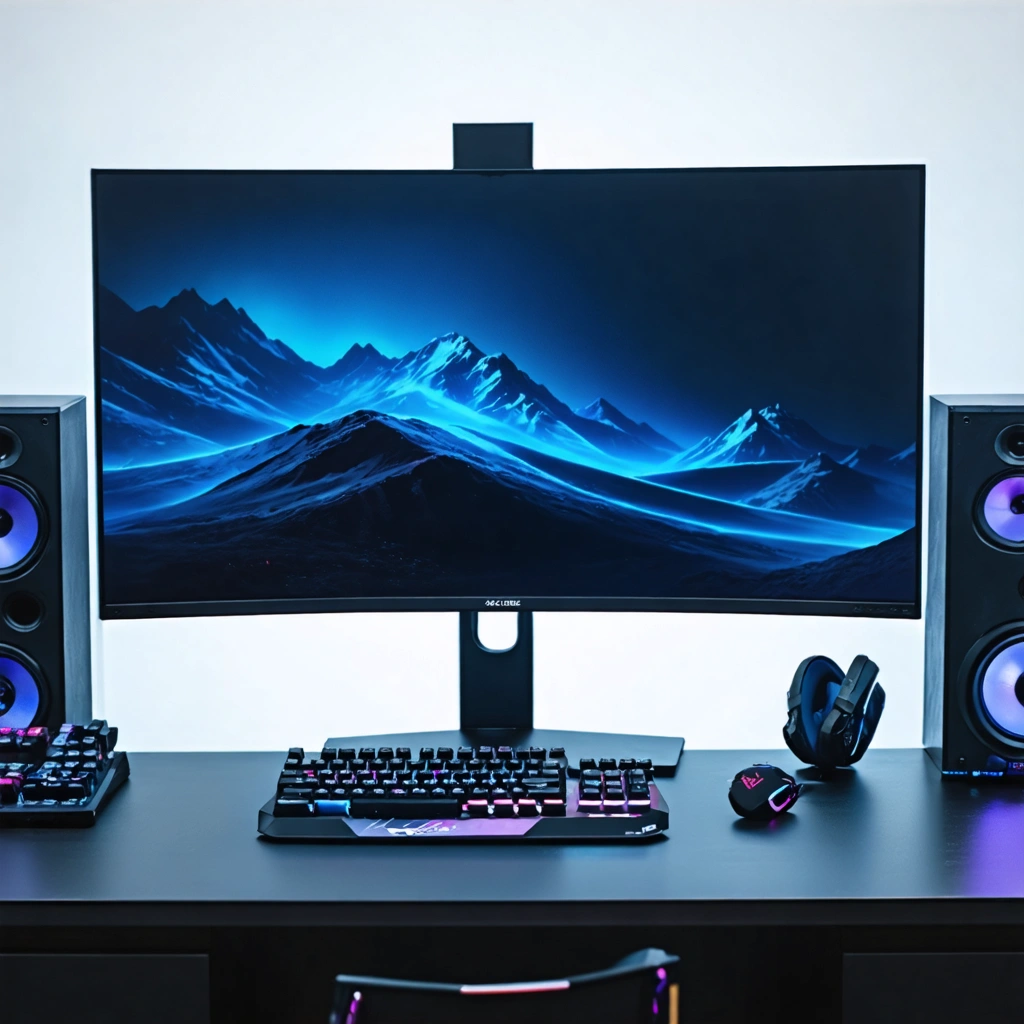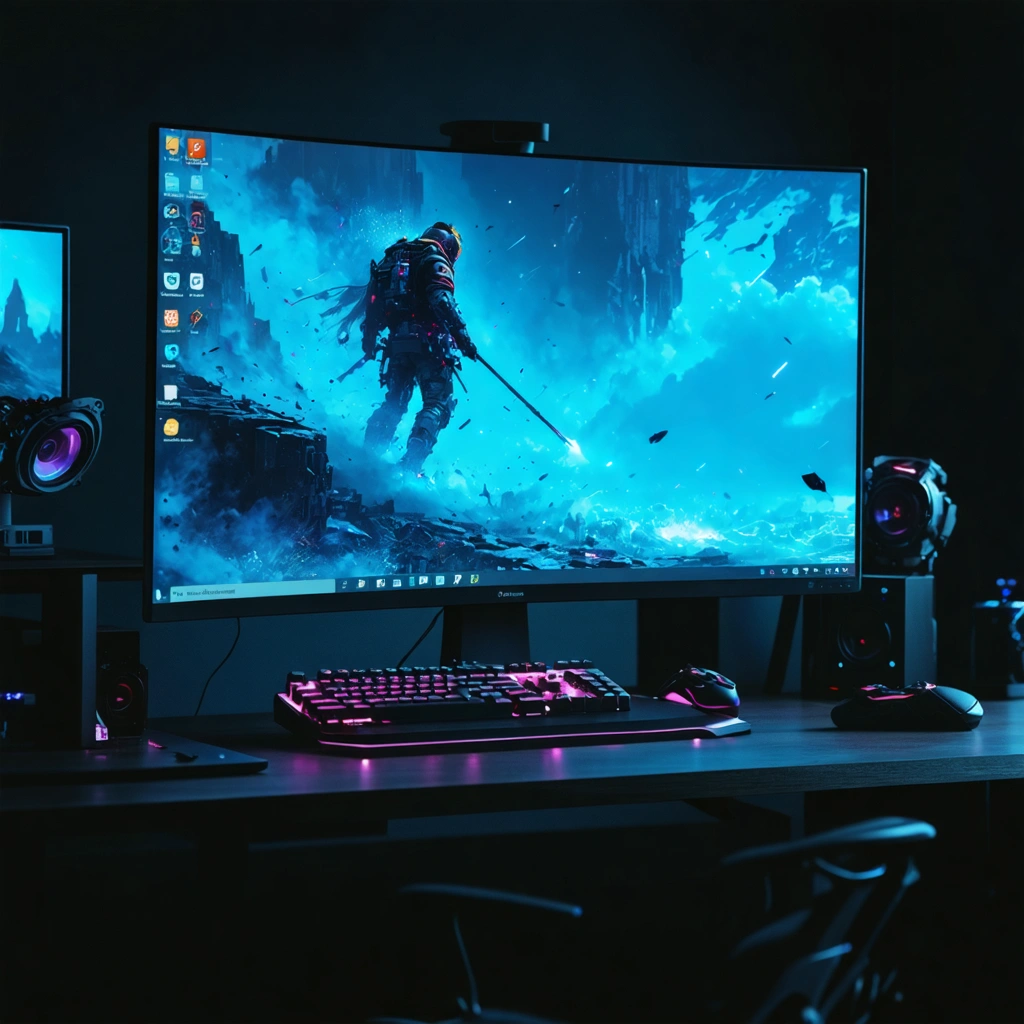
When Crisp Resolution Meets Lightning-Fast Refresh Rates
Have you ever felt that your gaming setup just isn’t quite keeping pace with your skills? You’re running the latest titles, pushing your graphics card to its limits, but your display seems like it’s holding you back. Blurry edges, choppy frame transitions, and screen tear can all sneak in, even when you're aiming for pure immersion. The truth is, not all monitors are created equal — and for gamers who crave both jaw-dropping visuals and silky smooth gameplay, settling for less just doesn’t cut it anymore.
That’s where the magic of a 4K 144Hz monitor comes into play. Imagine the stunning detail of a 4K monitor combined with the buttery fluidity of a 144Hz refresh rate. It’s like upgrading from a standard-definition TV to a cinema-grade screen, but with the added thrill of flawless, responsive motion. Whether you’re a competitive esports player or a story-driven RPG enthusiast, the right gaming monitor 4K setup can completely transform how you experience your favorite 4K game.
Why Traditional Monitors No Longer Cut It
Most gamers have probably started with a decent 1080p display, maybe a 60Hz refresh rate, and called it a day. But as game developers continue to deliver more visually intricate worlds and faster-paced action, your old monitor suddenly feels more like a bottleneck than a window into those worlds. It’s frustrating — you invest in powerful GPUs and CPUs, only to get stuck with visuals that don’t do justice to what your hardware can render.
And here’s the kicker: even a 4K monitor isn’t enough if it can’t keep up with the frame rate. Many 4K displays cap out at 60Hz or 120Hz, which is great, but for fast-paced games where milliseconds count, 144Hz is a game changer. It’s the difference between catching an enemy before they spot you or missing a crucial shot because the frame rate stall delayed your reaction.
Some gamers have dipped their toes into 4K 120Hz monitors, which is a solid middle ground, but the jump to 144Hz offers that extra edge. The subtle yet noticeable increase in smoothness can mean the difference between “okay” gameplay and an immersive, seamless experience where every frame feels alive and immediate.
The Allure of 4K 144Hz: What You Gain
So, what exactly makes a 4K 144Hz monitor the ultimate choice for gaming? Let’s break it down:
- Ultra-high resolution: With 3840 x 2160 pixels, your games look sharper than ever—textures pop, landscapes breathe, and details that were once lost in lower resolutions suddenly appear crystal clear.
- Super-smooth motion: At 144 frames per second, fast-moving scenes maintain clarity without blurring or tearing, making everything from rapid gunfights to high-speed racing feel fluid and responsive.
- Competitive advantage: In esports, every millisecond counts. A 4k 144hz monitor reduces input lag and motion artifacts, giving you an edge over opponents still stuck on slower displays.
- Future-proofing: With next-gen consoles and GPUs pushing 4K gaming forward, investing in a 4K 144Hz monitor means you’re ready for what’s next—whether that’s a new AAA title or the latest streaming tech.
But beyond specs, it’s about the experience. Imagine diving into a 4K game like “Cyberpunk 2077” or “Elden Ring” and seeing every raindrop, every flicker of light, every blade of grass rendered with breathtaking clarity—while your character moves as smoothly as silk across the screen. It’s not just playing; it’s living the game world.
What to Expect in This Guide
Throughout this article, we’ll explore everything you need to know to harness the power of a 4K 144Hz monitor for gaming. From understanding the technical nuances behind refresh rates and resolution to picking out the best models currently available. We’ll also discuss how to optimize your setup to squeeze every frame out of your PC or console, and highlight common pitfalls to avoid when upgrading your display.
If you’ve ever wondered whether a gaming monitor 4k combo like this is worth the investment, or if you’re curious about the differences between a 4k 144hz monitor and a 4k 120hz monitor, stay tuned. By the end, you’ll be ready to make an informed choice that elevates your gaming performance and enjoyment to a whole new level.
Ready to see your games in a whole new light? Let’s dive in.

4K 144Hz Monitors: Ultimate Clarity for the Ultimate Gaming Experience
What is a 4K 144Hz Monitor and Why Is It Important for Gaming?
A 4K 144Hz monitor combines a high-resolution display of 3840x2160 pixels with a refresh rate of 144Hz. This means it can show ultra-detailed images with extremely smooth motion, which is crucial for gamers who want both visual fidelity and fast responsiveness.
Traditional monitors often compromise between resolution and refresh rate. Many 4K monitors run at 60Hz, which limits motion smoothness, while gaming monitors at 144Hz usually have lower resolutions like 1080p or 1440p. A 4k 144hz monitor bridges this gap, delivering crisp visuals without sacrificing fluidity.
For a gaming monitor 4k at 144Hz, this combination enhances immersion by:
- Providing sharper textures, finer details, and more screen real estate to spot enemies or environmental cues.
- Reducing motion blur and input lag for faster reactions in competitive 4k games.
- Allowing smoother frame transitions and less tearing when paired with adaptive sync technologies like G-Sync or FreeSync.
How Does a 4K 144Hz Monitor Compare to a 4K 120Hz Monitor?
While both 4k 144hz and 4k 120hz monitors offer high resolution and fast refresh rates, the 144Hz variant pushes the refresh rate slightly higher to 144 frames per second, offering marginally smoother visuals. The difference between 120Hz and 144Hz can be subtle but noticeable in highly competitive gaming scenarios where every millisecond counts.
Another consideration is hardware compatibility. Many next-gen gaming consoles and GPUs support 4k 120hz output natively, making a 4k 120hz monitor a highly compatible choice. However, PC gamers with powerful setups aiming for ultra-high frame rates might prefer a 4k 144hz monitor to maximize performance.
What Hardware Do You Need to Fully Utilize a 4K 144Hz Monitor?
Driving a 4k 144hz monitor effectively requires a high-end graphics card and a capable CPU. Rendering games at 4K resolution with ultra settings and 144 frames per second is demanding.
Key hardware considerations include:
- Graphics Card: GPUs like NVIDIA RTX 4080/4090 or AMD RX 7900 XT/XTX are designed to handle 4k 144Hz gaming. Older or mid-range cards may struggle to maintain high frame rates at 4K.
- Processor: A fast, modern CPU (Intel i7/i9 or AMD Ryzen 7/9) ensures the GPU is not bottlenecked.
- Cables and Ports: DisplayPort 1.4 or HDMI 2.1 cables are required to support 4K at 144Hz bandwidth. Older cables or ports often cap refresh rates or resolutions.
Which Games Benefit Most from a 4K 144Hz Monitor?
While all games look better in 4K, fast-paced genres see the biggest improvements from 144Hz refresh rates. Examples include:
- First-Person Shooters (FPS): Games like Call of Duty, Valorant, and Battlefield rely on quick reflexes and smooth visuals to track targets accurately.
- Racing and Simulation Games: Titles such as Forza Horizon and Flight Simulator benefit from fluid motion and high detail for realism.
- MOBA and Strategy Games: Even games like League of Legends or StarCraft II gain from the clarity and responsiveness, aiding in precise control.
On the other hand, slower-paced or story-driven games also enjoy enhanced visuals, but the refresh rate is less critical to gameplay.
Are There Any Drawbacks to Using a 4K 144Hz Gaming Monitor?
While 4k 144hz monitors offer impressive performance and clarity, there are some considerations:
- Cost: These monitors tend to be expensive, often costing several hundred to over a thousand dollars.
- Hardware Demands: Achieving 144fps at 4K requires cutting-edge PC components, which also adds to the expense.
- Power Consumption: High refresh rate and resolution displays can consume more power.
- Limited Content: Some games or applications are not optimized to run at 144Hz or may have frame rate caps below 144fps.
How to Choose the Best 4K 144Hz Monitor for Your Needs?
When selecting a 4k 144hz monitor, consider the following factors:
- Panel Type: IPS panels offer better color accuracy and viewing angles, while VA panels typically have better contrast but slower response times.
- Adaptive Sync: Support for G-Sync or FreeSync reduces screen tearing and stuttering.
- Input Lag and Response Time: Lower values improve gaming responsiveness.
- Connectivity: Ensure the monitor has DisplayPort 1.4 or HDMI 2.1 inputs.
- Size and Ergonomics: Common sizes range from 27 to 32 inches. Adjustable stands and VESA mount compatibility improve comfort.
Conclusion: Is a 4K 144Hz Monitor Worth It for Gaming?
For gamers seeking the pinnacle of both visual clarity and smooth gameplay, a 4k 144hz monitor is an excellent choice. It provides a breathtaking combination of ultra-high resolution and fast refresh rates that enhance immersion and competitive performance in 4k games.
However, to fully leverage its benefits, you must have a powerful PC setup and be willing to invest in premium hardware. If your priority is ultimate clarity and smoothness in gaming, the 4k 144hz monitor is a future-proof investment that delivers stunning visuals and responsiveness unmatched by lower-spec displays.


